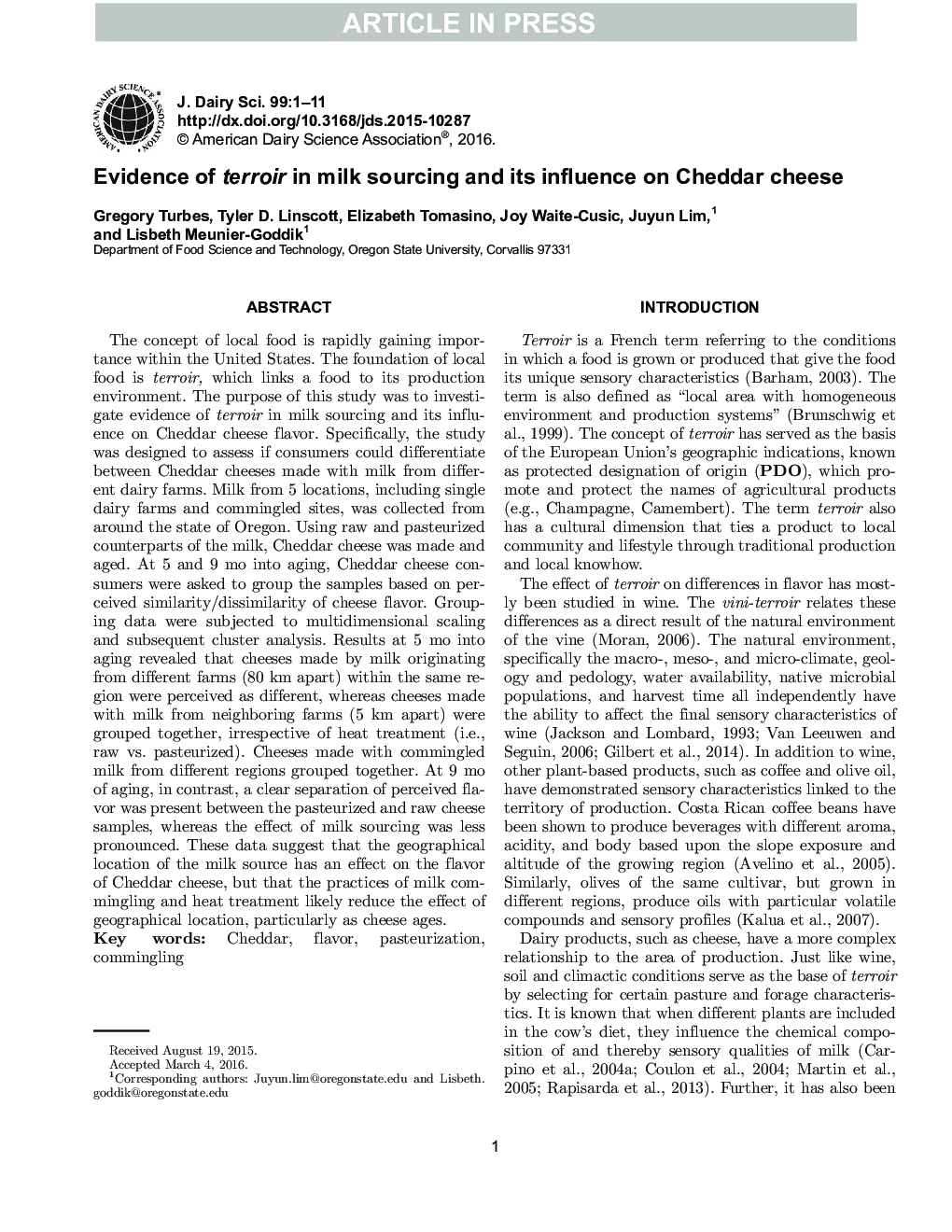| Article ID | Journal | Published Year | Pages | File Type |
|---|---|---|---|---|
| 10973610 | Journal of Dairy Science | 2016 | 11 Pages |
Abstract
The concept of local food is rapidly gaining importance within the United States. The foundation of local food is terroir, which links a food to its production environment. The purpose of this study was to investigate evidence of terroir in milk sourcing and its influence on Cheddar cheese flavor. Specifically, the study was designed to assess if consumers could differentiate between Cheddar cheeses made with milk from different dairy farms. Milk from 5 locations, including single dairy farms and commingled sites, was collected from around the state of Oregon. Using raw and pasteurized counterparts of the milk, Cheddar cheese was made and aged. At 5 and 9Â mo into aging, Cheddar cheese consumers were asked to group the samples based on perceived similarity/dissimilarity of cheese flavor. Grouping data were subjected to multidimensional scaling and subsequent cluster analysis. Results at 5Â mo into aging revealed that cheeses made by milk originating from different farms (80Â km apart) within the same region were perceived as different, whereas cheeses made with milk from neighboring farms (5Â km apart) were grouped together, irrespective of heat treatment (i.e., raw vs. pasteurized). Cheeses made with commingled milk from different regions grouped together. At 9Â mo of aging, in contrast, a clear separation of perceived flavor was present between the pasteurized and raw cheese samples, whereas the effect of milk sourcing was less pronounced. These data suggest that the geographical location of the milk source has an effect on the flavor of Cheddar cheese, but that the practices of milk commingling and heat treatment likely reduce the effect of geographical location, particularly as cheese ages.
Related Topics
Life Sciences
Agricultural and Biological Sciences
Animal Science and Zoology
Authors
Gregory Turbes, Tyler D. Linscott, Elizabeth Tomasino, Joy Waite-Cusic, Juyun Lim, Lisbeth Meunier-Goddik,
